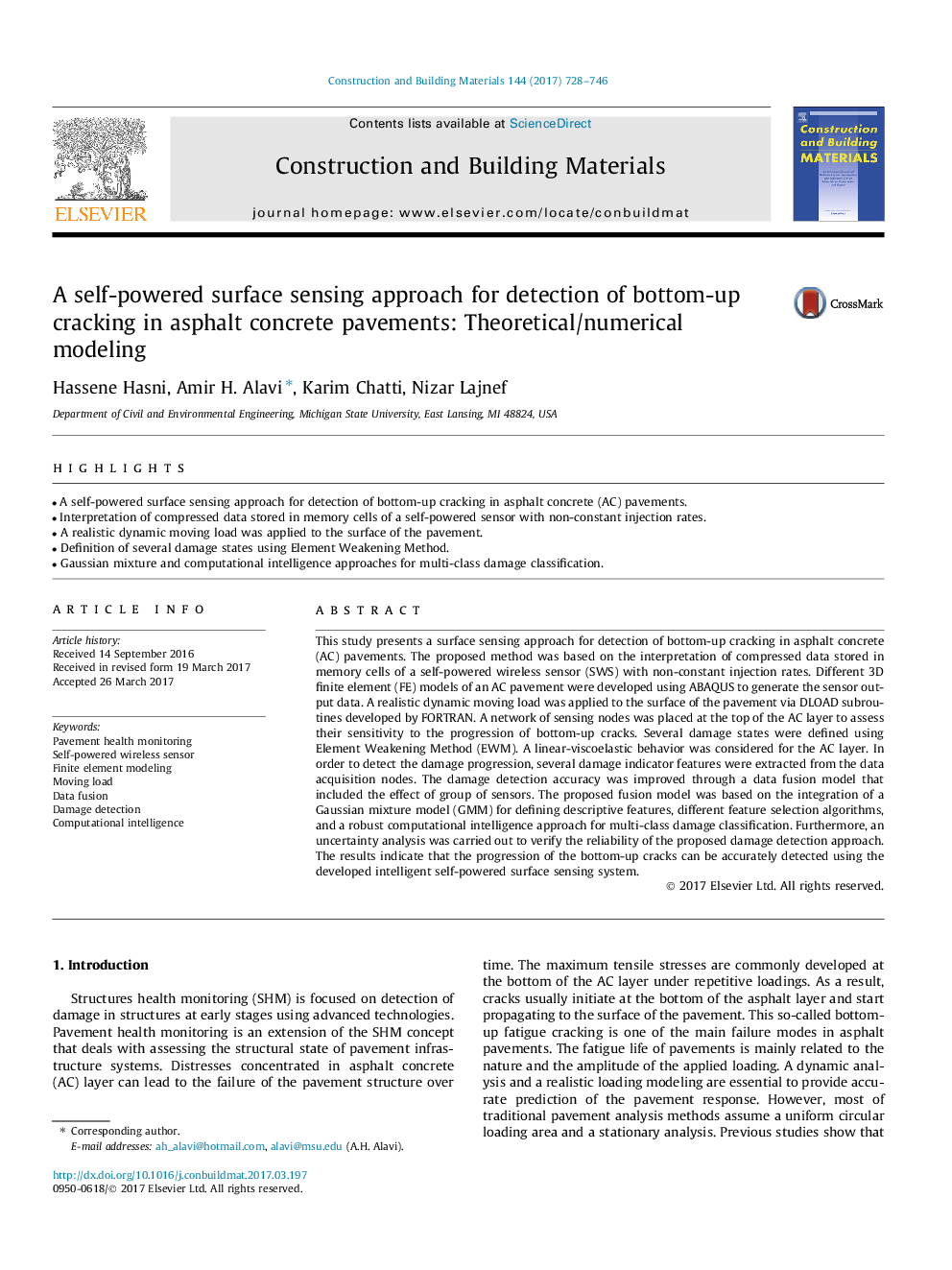| کد مقاله | کد نشریه | سال انتشار | مقاله انگلیسی | نسخه تمام متن |
|---|---|---|---|---|
| 4913206 | 1428762 | 2017 | 19 صفحه PDF | دانلود رایگان |
عنوان انگلیسی مقاله ISI
A self-powered surface sensing approach for detection of bottom-up cracking in asphalt concrete pavements: Theoretical/numerical modeling
ترجمه فارسی عنوان
یک رویکرد سنجش سطح خود برای شناسایی ترک خوردگی پایین به بالا در آسفالت بتن: مدل سازی نظری / عددی
دانلود مقاله + سفارش ترجمه
دانلود مقاله ISI انگلیسی
رایگان برای ایرانیان
کلمات کلیدی
نظارت بر بهداشت روکش، سنسور بیسیم خودتنظیم مدل سازی عنصر محدود حرکت بار همجوشی داده ها، شناسایی آسیب، هوش مصنوعی،
موضوعات مرتبط
مهندسی و علوم پایه
سایر رشته های مهندسی
مهندسی عمران و سازه
چکیده انگلیسی
This study presents a surface sensing approach for detection of bottom-up cracking in asphalt concrete (AC) pavements. The proposed method was based on the interpretation of compressed data stored in memory cells of a self-powered wireless sensor (SWS) with non-constant injection rates. Different 3D finite element (FE) models of an AC pavement were developed using ABAQUS to generate the sensor output data. A realistic dynamic moving load was applied to the surface of the pavement via DLOAD subroutines developed by FORTRAN. A network of sensing nodes was placed at the top of the AC layer to assess their sensitivity to the progression of bottom-up cracks. Several damage states were defined using Element Weakening Method (EWM). A linear-viscoelastic behavior was considered for the AC layer. In order to detect the damage progression, several damage indicator features were extracted from the data acquisition nodes. The damage detection accuracy was improved through a data fusion model that included the effect of group of sensors. The proposed fusion model was based on the integration of a Gaussian mixture model (GMM) for defining descriptive features, different feature selection algorithms, and a robust computational intelligence approach for multi-class damage classification. Furthermore, an uncertainty analysis was carried out to verify the reliability of the proposed damage detection approach. The results indicate that the progression of the bottom-up cracks can be accurately detected using the developed intelligent self-powered surface sensing system.
ناشر
Database: Elsevier - ScienceDirect (ساینس دایرکت)
Journal: Construction and Building Materials - Volume 144, 30 July 2017, Pages 728-746
Journal: Construction and Building Materials - Volume 144, 30 July 2017, Pages 728-746
نویسندگان
Hassene Hasni, Amir H. Alavi, Karim Chatti, Nizar Lajnef,
